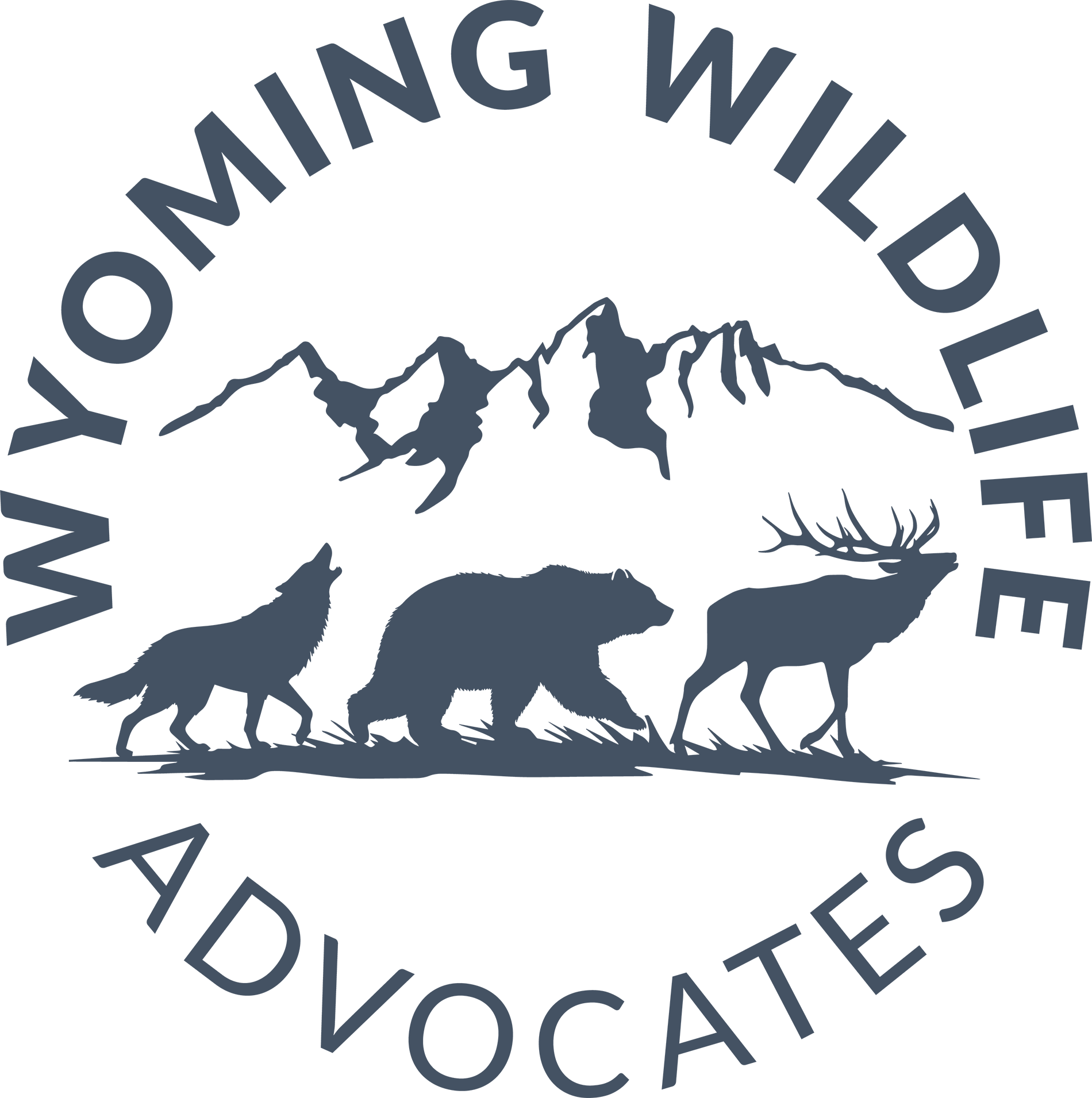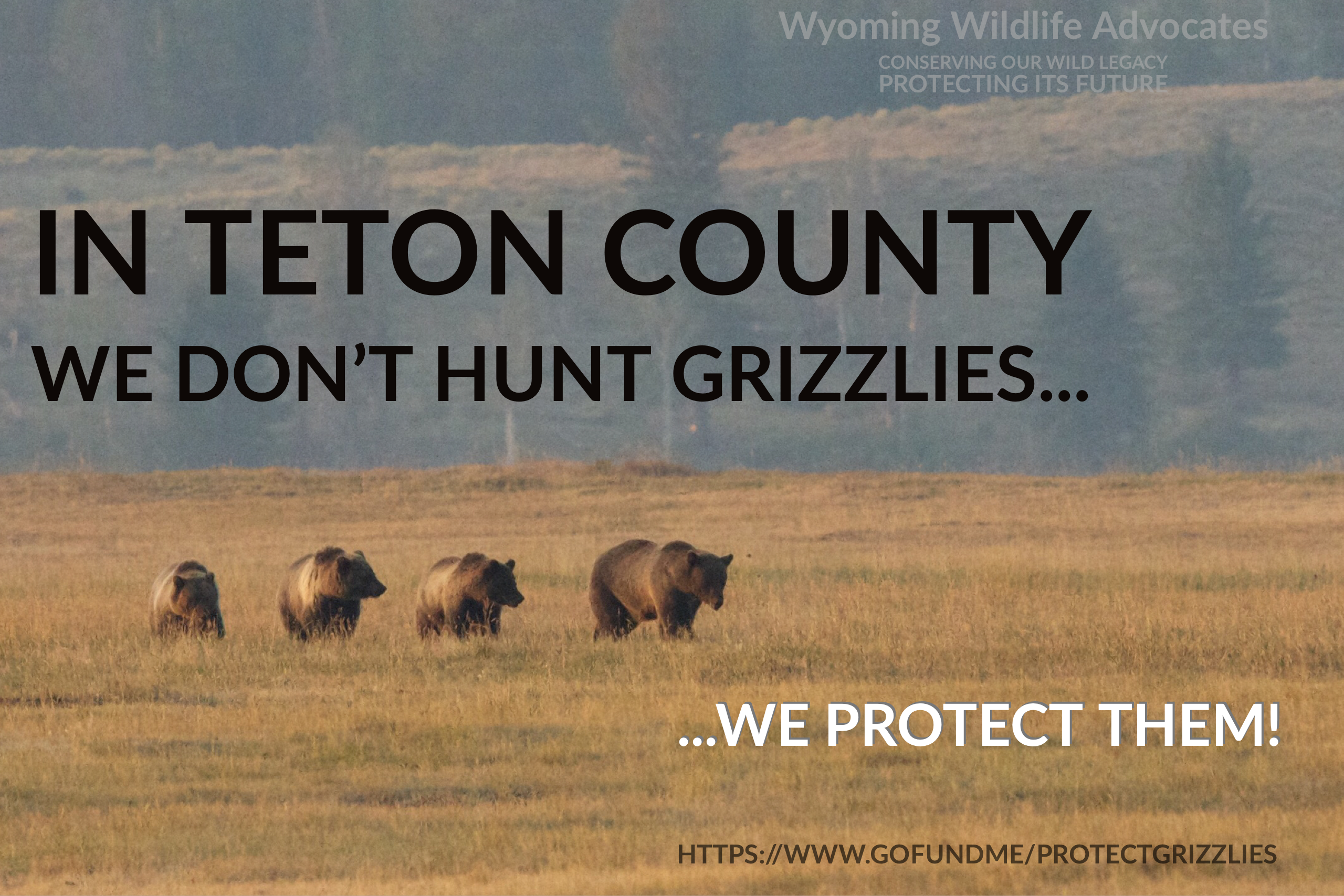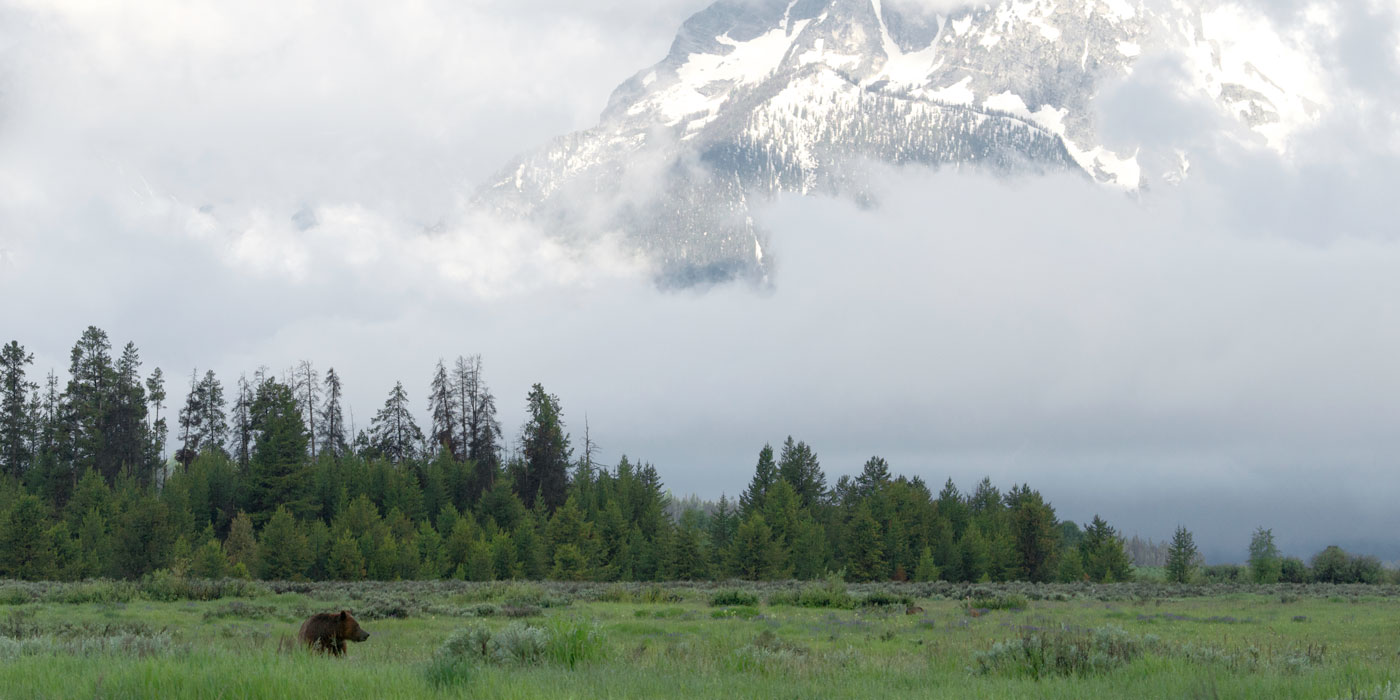By Angus M Thuermer Jr./WyoFile
— October 21, 2014
Two Teton County photographers filed a lawsuit in Washington, D.C. Monday seeking to stop the annual elk hunt in Grand Teton National Park.
Tim Mayo and Kent Nelson, operating as Wyoming Wildlife Advocates, target the “elk reduction program,” in which hunters killed 202 elk last year. The hunt also resulted in the shooting of a grizzly bear, a federally protected species, in 2012.
The suit goes beyond hunting alone, challenging supplemental winter elk feeding on the nearby National Elk Refuge. The hunt violates a slew of federal laws, the suit claims, including the Grand Teton Act, the National Park Organic Act, the Endangered Species Act and National Environmental Policy Act.
Nelson and Mayo ask a judge to declare the 2014 hunt illegal, along with the park’s “policy, practice and pattern,” of adopting it annually. The suit challenges the U.S. Fish and Wildlife Service’s 2013 determination that park hunters could kill four additional grizzlies by 2022 before Grand Teton would run afoul of the Endangered Species Act.
The suit seeks reversal of that Fish and Wildlife “incidental take” number. It also asks for an environmental review, with public comment, of the park’s elk reduction program.
The legal action names National Park Service Director Jonathan Jarvis, U.S. Fish and Wildlife Service director Daniel Ashe and Secretary of the Interior Sally Jewell as defendants.
A Fish and Wildlife spokesman said his agency does not comment on pending litigation. Grand Teton officials did not comment by press time Monday evening.
“The various laws define a rigorous process which the agencies that authorize and administer the hunt are required to follow,” Nelson said Monday in a statement. “We are alleging that the agencies’ legal obligations were sometimes ignored and at other times were essentially rubber-stamped without performing legally required due diligence.”
Before the suit was filed, a park spokeswoman and biologist outlined how and why the elk reduction program is authorized each year. Among other reasons, the hunt is necessary to ensure the Jackson Elk Herd remains within population objectives and evenly distributed across four summer ranges, spokeswoman Jackie Skaggs and Grand Teton Senior Wildlife Biologist Steve Cain said last week. The Wyoming Game and Fish objective for the herd stands at 11,000 while biologists estimate 11,600 in the herd in the last annual winter census.
Hunt keeps elk distributed, park says
Without a hunt, more and more of the elk in the herd would move to Grand Teton, overwhelming habitat there as they abandoned other areas, Skaggs and Cain said.
“That’s not desirable ecologically or for any other reason,” Cain said. Stopping the hunt would “greatly affect recreational hunting and the ability to manage the herd outside the park.”
Mayo and Nelson’s suit comes as the public continues to scrutinize the hunt, which is highly unusual in a National Park. The law expanding Grand Teton in 1950 allows the Elk Reduction Program “for the purpose of proper management and protection of the elk.”
In cooperation with the Wyoming Game and Fish Department, Grand Teton has staged the hunt in all but two of the last 64 years, Skaggs said. The 2014 hunt began Saturday.
The 2012 Thanksgiving Day killing of a grizzly by hunters in Grand Teton emerges as a pivotal incident in the suit. Hunters sprayed the advancing 534-pound bear with bear pepper spray and shot it dead, practically simultaneously, park reports say.
That put Grand Teton at the limit of anticipated grizzly deaths due to the hunt. One more and the hunt would have violated the Endangered Species Act.
The park closed 8 miles of wooded Snake River bottomlands to hunting as a result. It is the only agency to require hunters to carry bear spray.
Meantime, Fish and Wildlife increased the number of grizzly bears it predicts hunters will kill from 2007 through 2022. The original prediction was one; in 2013 Fish and Wildlife boosted that to five.
“The FWS provided no explanation as to how it derived these “take” figures, which dramatically increased the permitted take of threatened grizzly bears,” the suit says. “The FWS did not impose any new binding measures on the NPS to ensure that these new take figures would not be exceeded, and the FWS also did not impose any new reasonable and prudent measures or terms and conditions with which NPS must comply.”
Fish and Wildlife did say it expected the hunt to result in a “relatively high risk of hunter-grizzly bear contacts.” The suit claims, too, that Fish and Wildlife didn’t examine the disruption to bears’ habits caused by hunters leaving gut piles behind in the park.
Grizzlies have expanded their range, making the Fish and Wildlife increase from its 2007 “incidental take” number necessary, Cain said. “There has been measurable, considerable change in grizzly bear activity and presence in the south end of the park since 2007,” Cain said.
Grizzly bears expand range
Evidence of the expansion includes the appearance of grizzly mom no. 399 who showed up on the elk refuge during the bison hunt in 2012, the first recent appearance of a grizzly on that preserve.
That opened the door.
“Last year during the hunt multiple bears were seen multiple times on the refuge,” Cain said. “They were picking up gut piles.”
Two weeks ago Game and Fish trapped a grizzly in The Aspens subdivision, about 6 miles south of Grand Teton, the Jackson Hole News&Guide reported. A man walking his dog “ended up in a closer situation than he would have liked,” the paper said, quoting a Game and Fish biologist.
Yet Fish and Wildlife failed to go through “formal steps,” in increasing the “incidental take” number, the lawsuit says. The federal agency in charge of endangered species also failed to provide “any biological or other basis for the increased amount of take of grizzly bears authorized,” the suit states.
Federal documents show Fish and Wildlife did consider the overall ecosystem grizzly population and trends.
Grand Teton did not ask for a particular increase, Cain said. “We don’t really have any input on what that take is,” Cain said. “The park did not propose a number. That number was given to us,” by Fish and Wildlife.
“Our hope is we don’t have any more bears killed in the park, ever,” Cain said. “Our management goal is zero bears killed by hunters. It always has been and always will be.”
Mayo and Nelson’s challenge also incorporates the practice of supplemental feeding at the refuge. In the 2007 Bison and Elk Management Plan, refuge officials sought to reduce the number of elk on supplemental feed to 5,000.
However, “the number of elk being fed with supplemental feeding in the Elk Refuge has increased from 7,279 elk in 2007, when the Management Plan was adopted, to 8,300 elk in 2014,” the suit says. “The FWS is not in fact in the process of phasing out the supplemental feeding of elk … despite the fact that the FWS is now already in year 7 of the 15-year Plan during which the phase-out is supposed to be accomplished.
“The supplemental feeding program also artificially increases the number of elk that would otherwise be in the area, which in turn has become the justification NPS employs to allow the killing of elk each year via the (Elk Reduction Program)” the suit says. The filing quotes federal documents that say “eliminating winter feeding on the refuge would negate the need for hunting elk,” in the park.
Parts of the Jackson Elk Herd also are fed in winter on state feedgrounds in the Gros Ventre River drainage.
Ultimately, “… NPS has never made a finding that … hunting is ‘necessary for the proper management and protection of the elk,’” the suit says. “Nor … has NPS ever analyzed the basis for, or validity of, the 11,000 elk population goal upon which the hunt is based.” Park hunt has gotten smaller Grand Teton has made significant strides toward reducing the hunt, Cain said.
“We’ve had successful recovery of the grizzly bear and wolf,” Cain said. “Natural regulation is playing a much larger part in the park than it did in the last 50-60 years.”
That’s part of the reason there are only 650 park hunting permits available this year instead of the 3,000 that have been offered in the past, he said. The hunt is now in a “maintenance state,” Cain said.
The park has stopped hunting north of Spread Creek, Elk Hunt Area 79, except on a very limited basis.
“Nobody ever dreamed Area 79 would close,” Cain said. “That’s a significant change.”
“We have been near and at objective,” he said of the number of elk in Grand Teton. Crunching park and state hunt numbers, the park hunt accounted for 14 percent of the Jackson Elk Herd harvest last season.
The Jackson Elk Herd summers in Grand Teton, southern Yellowstone, plus the Teton Wilderness and Gros Ventre/Mt Leidy Highlands areas of the Bridger-Teton National Forest. The herd winters on the refuge, run by Fish and Wildlife, at the state feedgrounds and on natural winter range around Jackson Hole.
Photographer Kent Nelson, one of two lensmen who have sued to stop the Grand Teton National Park Elk Reduction Program, got this picture of a band of elk retreating toward safe ground after running into hunters. The hunt targets resident Teton elk and elk from Yellowstone and the Teton Wilderness that migrate through protected parts of Grand Teton.
Hunters killed 1,437 elk from the herd last hunting season, including in Grand Teton, on the Bridger-Teton and on private land. Two thousand eight hundred and seventy-four hunters took to the field, spending 19,000 “recreation days” hunting, Game and Fish reports say.
Elk killed in the park hunt include some from southern Yellowstone and the Teton Wilderness that traverse protected parts of Grand Teton to reach the refuge in the fall. Hunting in Grand Teton is allowed only in parts of the park east of the Snake River.
Elk reduction will be necessary, “as long as we maintain 11,000 or more elk with similar diet and migrations,” Cain said. Reducing or stopping the hunt “would only occur if the population itself was significantly reduced.”
The population bottleneck is winter range, Cain said.
Winter range on a truck
“Right now both the refuge and State of Wyoming bring in winter range on trucks through their feeding programs,” Cain said. “Since the winter range is the limiting factor, the elk managers are trying to equitably distribute the elk that take advantage of these feeding programs.”
If park hunting stopped and Grand Teton’s summer population of elk doubled or tripled, those elk would make up a larger portion of the herd. Correspondingly, there would be fewer elk on the other three summer ranges.
If park hunting stopped, elk would learn of the sanctuary, as have Jackson Hole bison. Hunters can’t shoot bison in the park — only on the refuge and National Forest.
“The state is finding it very difficult to attain an adequate bison harvest,” Cain said. “They learn they are safe within the confines of the park.”
Similarly, “all those elk would have to do is go to Grand Teton and not get hunted,” Cain said.
Distribution of elk around Jackson Hole would shift. “Most people view that as undesirable,” Cain said.
Today, about 1,600 elk summer in Grand Teton, Cain said. There used to be between 2,000 and 2,500.
Historically, the Grand Teton elk reduction mainly targeted migrating elk. Before Congress expanded the park in 1950, cattle grazing kept the Grand Teton resident population low, Cain said. Now, those elk are also targets.
If hunting in Grand Teton stopped, “You may have a much greater portion of Teton Wilderness elk that learn to migrate at night from summer range to the park and then to safe areas of the National Elk Refuge,” Cain said. The result could be skewed migration routes, lost recreational hunting and increased impacts on Grand Teton. The herd would be “harder to manage.”
The result could be disproportional use of fall transitional range, he said.
Hunt numbers reviewed each year
Grand Teton and Game and Fish determine the annual hunt numbers together, Cain said.
“We review all the most recent information, summer classification, winter counts, harvest of previous year,” he said. “Usually what occurs is Game and Fish makes their recommendation, we make a counter-recommendation [and] throughout the meeting we basically come to an agreement.”
The suit says elk hunting in the park disrupts Mayo’s enjoyment of the preserve.
”The noise of gunshots and the commotion caused by the hunt participants scares the elk and much of the other wildlife Mr. Mayo wishes to photograph, making it much more difficult to photograph these animals in their natural state,” the filing says. “In addition, when they enter areas open to hunters, the elk, which are wary of hunters, cease much of their instinctual behavior and rush their movements, which under normal circumstances would include much slower travel, majestic bugling, and other rutting behaviors, which enthusiasts like Mr. Mayo enjoy witnessing and photographing.”
The hunt also is hazardous to visitors, the suit claims.
“On one occasion, while taking photographs, Mr. Mayo’s life was endangered when a hunt participant carelessly shot towards US Highway 26 where Mr. Mayo was standing, and several stray bullets hit the ground within several feet of Mr. Mayo,” the filing says.
“The hunts increase the risk of human-bear conflicts, which in turn result in grizzly bears being shot, thus decreasing the number of bears that can be observed and photographed by Mr. Mayo.”
The suit makes similar claims regarding Nelson, who spends 150 days a year photographing wildlife professionally in Grand Teton.
The park is required to preserve scenery, and natural and historic objects and wildlife, but failed to make what’s known as a “non-impairment” finding with regard to the hunt, the suit contends. Authorities authorized the hunt without an environmental review allowing public comment, thus violating the National Environmental Policy Act, the suit says.
You can read the original WyoFile story by clicking here.





